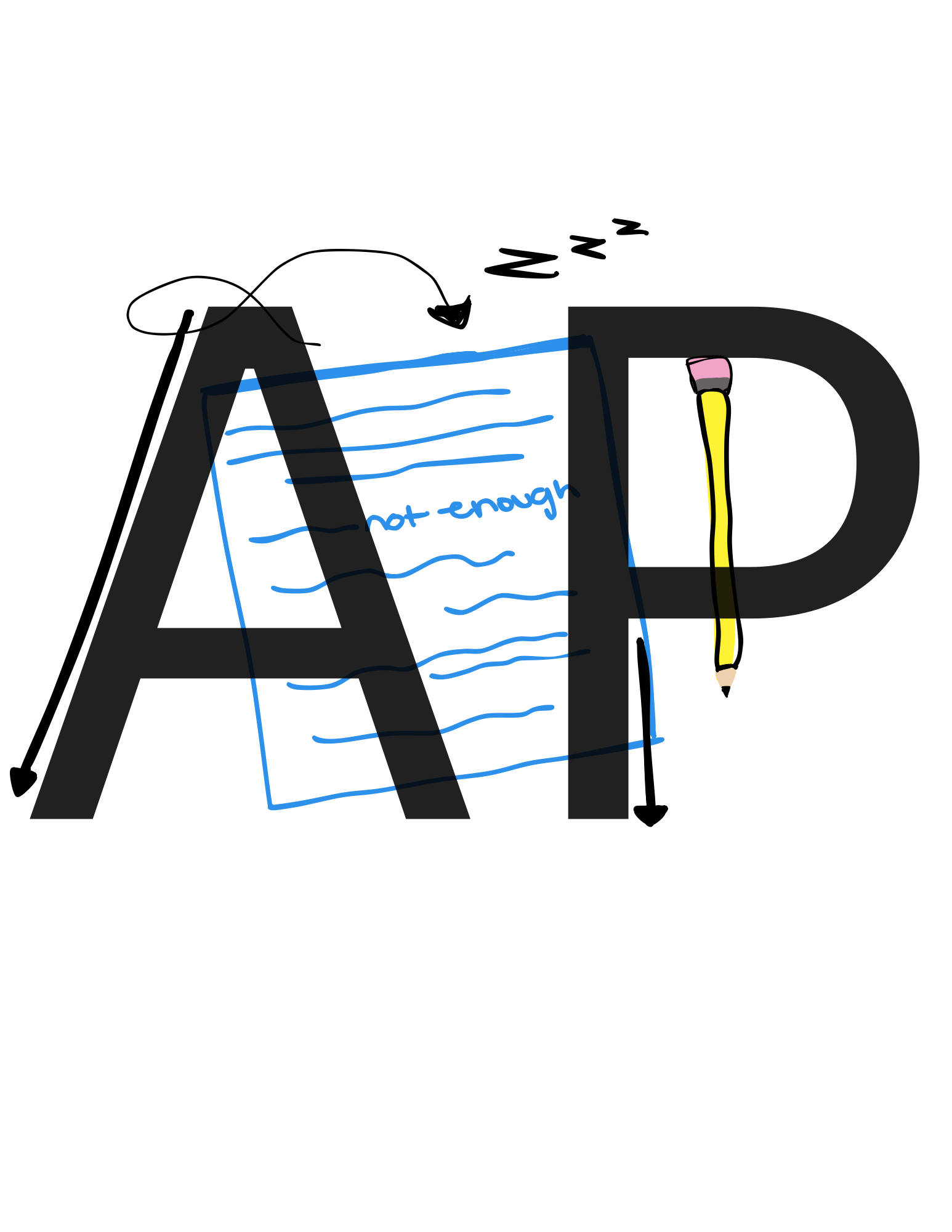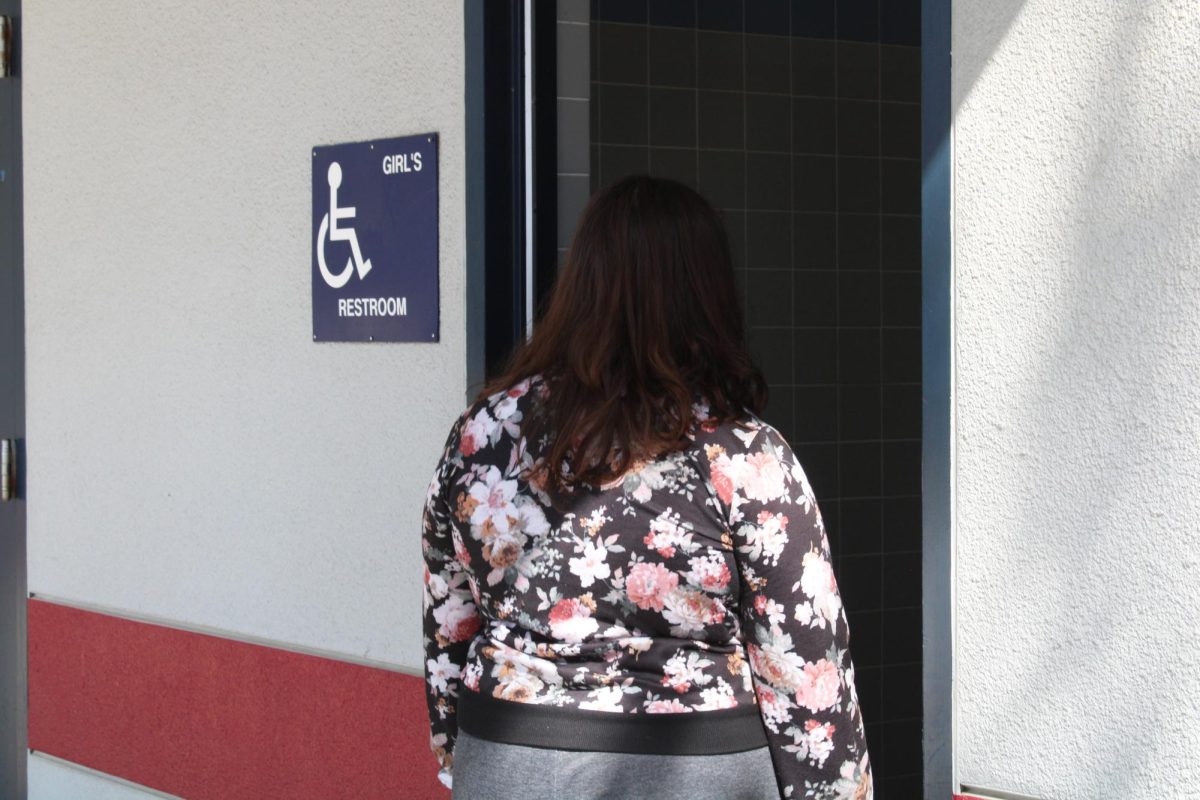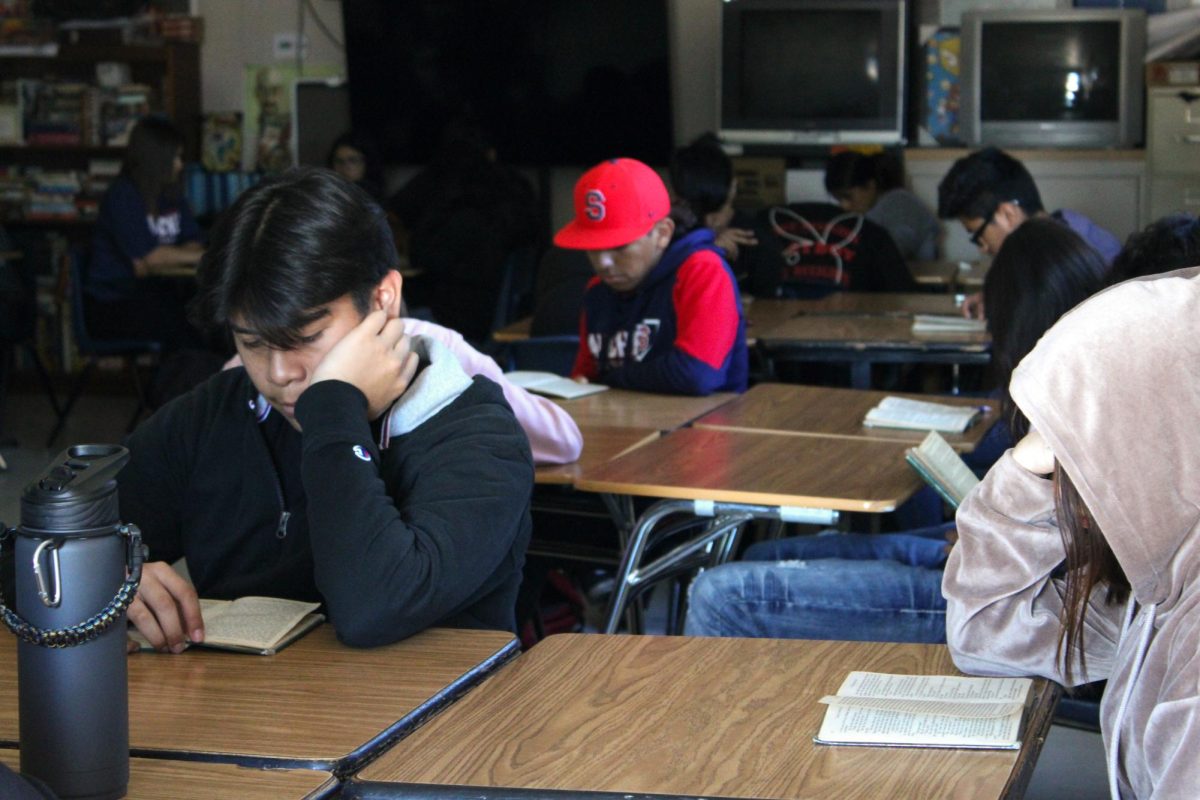As students prepare for their most anticipated exam of the year, the contents of the test and handling of the AP Exam are questioned. College Board is an organization designed to administer and distribute exams to students in high school. These exams are overviewed in college admissions and are devised to set up students for their college career, but they also present a few challenges in the life of a high school student.
Elison Baird, AP Language teacher, explains the purpose of the exam.
“Each Advanced Placement course is paired with an exam that tests the student’s mastery of the content and skills associated with each course. Most AP Exams have multiple sections including, but not limited to, multiple choice questions and free response questions,” said Baird.
The College Board designs a respective exam for courses ranging from AP Statistics, Language and Composition, Physcology, U.S History and more.
Bethany Ray, junior and AP student, is very vocal on the way AP testing is conducted and as a student passing with 5’s on AP Biology and AP European History, she has mixed opinions on the testing as a whole.
“There are two major issues [the] College Board should fix about the AP Exam process. Firstly, they should have more options for test dates. Some students end up taking multiple exams in the same week (or even the same day). Students should be able to select from a handful of dates to best fit their schedule. Secondly, the CollegeBoard should drastically reduce the price of the exam and study materials. CollegeBoard is a self-proclaimed “nonprofit.” They need to start acting like it,” says Ray.
The exam is notorious for being highly challenging. On top of the chance that a student does not pass and year long efforts and preparation go to waste, the large sum of money spent trying goes down the drain too. It’s a system that has been enacted for decades but a challenge that prevails and grows more as students fall victim to a score of two or one and get little to nothing out of it.
Each exam is around $70 more or less if students qualify for the fee waiver. Additionally, they pay more if they take more than one exam for more than one class.
“Unless you’re in it for a challenge or bragging rights, there is no point in paying. AP exams are designed with student’s failure in mind. Low pass rates maintain College Board’s prestigious ‘academic integrity,’ while forcing students to pay for a $90 retake if they want the college credits,” says Ray.
The price is a way bigger deal than they make it out to be and unreasonable for students to pay when costs amount the more exams you take and years you take them. Although it is optional, the exam is highly encouraged and demanding enough that most students feel obligated to take it despite all the external struggles.
“In a perfect world school, districts would cover the cost of AP Exams, but this is very difficult because there would have to be a method to ensure that each student a test is ordered for was taking it very seriously and not squandering the opportunity,” said Baird.
In a way, this makes sense, but chopping the price in half adheres to student needs as well as still funding the college board.
“If students pass the AP Exam with a 3/5 or higher, then they earn college credits. The direct benefit of these credits are determinant upon where a student enrolls in undergraduate courses,” said Baird.
Essentially, the students only get the credits for the entire year if they pass the exam, despite undergoing an advanced course the entire two semesters.
“All of [the] College Board’s shortcomings are exacerbated in light of dual enrollment and High School Enrichment. Both of these programs are FREE alternatives that grant you college credits that are GUARANTEED to be transferable. Plus, they are half-semester courses, so you could get double the college credits in the same amount of time it takes to complete one AP class. There is no way to justify paying for an AP test when these opportunities are available,” says Ray.
AP teachers spend most of the year preparing and measuring success for their students taking the lengthy exam, but for most it’s all in vain when looking at what the class gives you credit-wise. On the other hand, dual enrollment, free and less time consuming, offers the same if not more skills, knowledge, and experience above the standard while simultaneously ensuring you get the college credits.
“The majority of the course work in an AP course is directed towards developing student’s skills for the exam. In many ways it’s the main focus of the course. However, each AP teacher will also tailor the course to ensure each student is receiving a well rounded experience,” said Baird.
Despite the hard effort of teachers to make the course more broad in the context of the course, ultimately it’s a very noticeable imbalance between learning and studying, more importantly a block in student learning.
“I didn’t learn from AP exams– I didn’t even learn from studying for my exams. I learn best in class, and especially when my teachers aren’t “teaching for the test.” If anything, AP Exams hinder learning [ ] AP’s rigidity means teacher’s can’t cater to the unique needs of their students and its quick pace discourages critical discussion and in-depth learning, otherwise you risk falling behind schedule,” said Ray.
As demanding as the exam is in its test for excellence, it’s ironic that it leaves students believing they didn’t learn anything from it.
“For the course I teach, a little less than 50% of students pass the exam. I talk with my students about how a 2/5 on the exam shouldn’t be viewed as a failure. These students have still learned a great deal and typically go on to do very well at the next level,” said Baird.
“Failing an AP class is inconsequential and no indicator of student intelligence. It’s a shame that it determines whether or not a student’s money is well spent,” says Ray.
Completing the exam, with its apparent difficulties, is an entire range of obstacles fought. If there’s one thing to be acknowledged after a score is given, credits are determined, and money is spent, it’s that none of it actually measures true talent.





